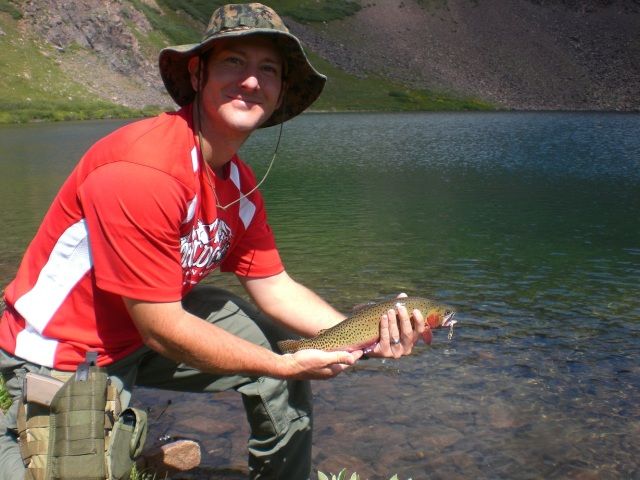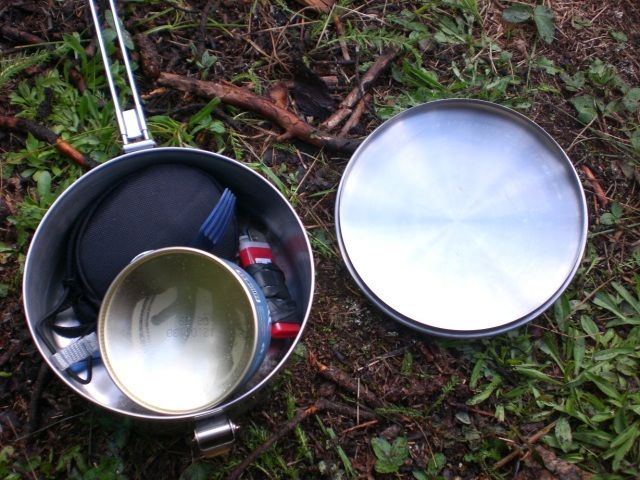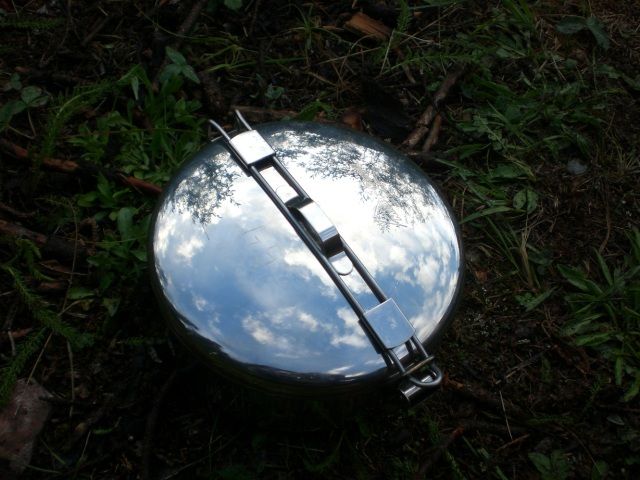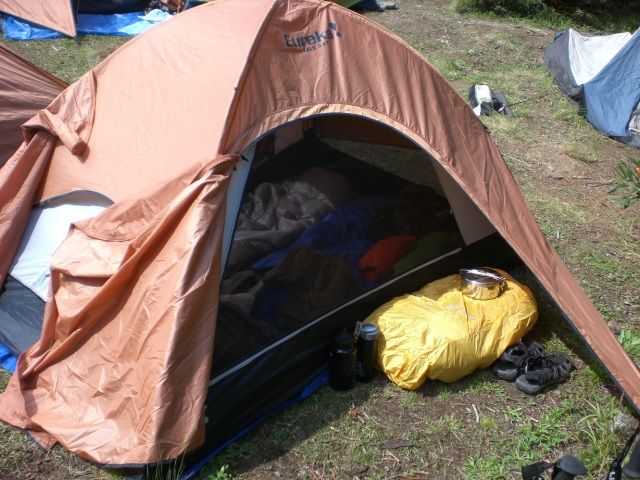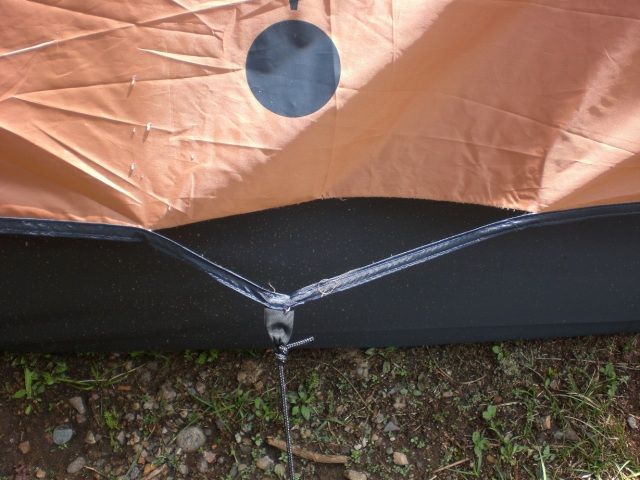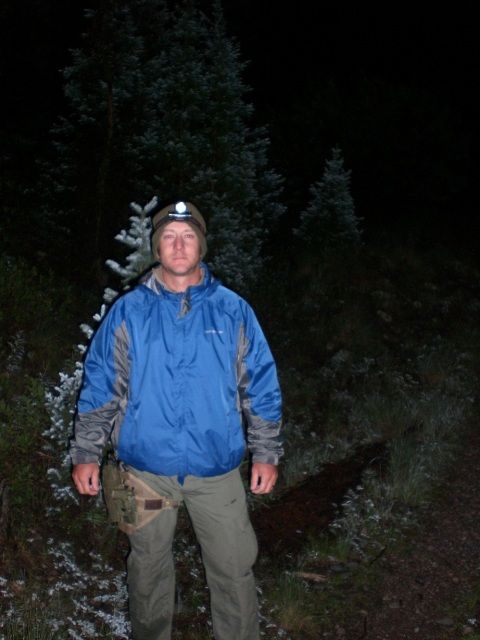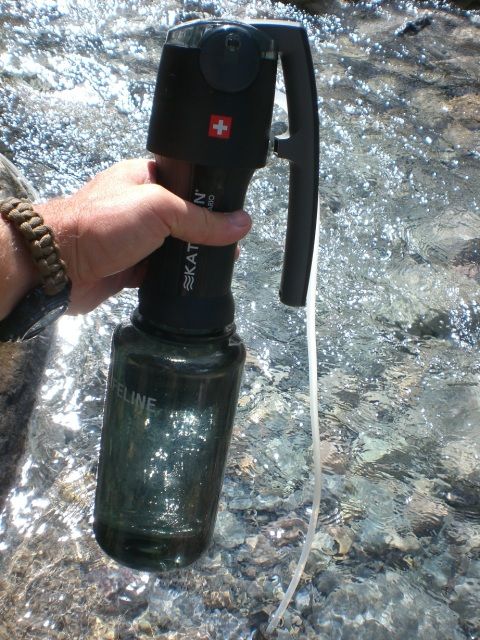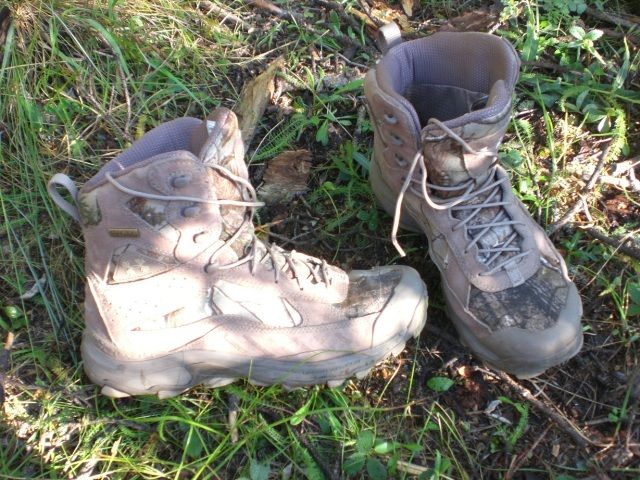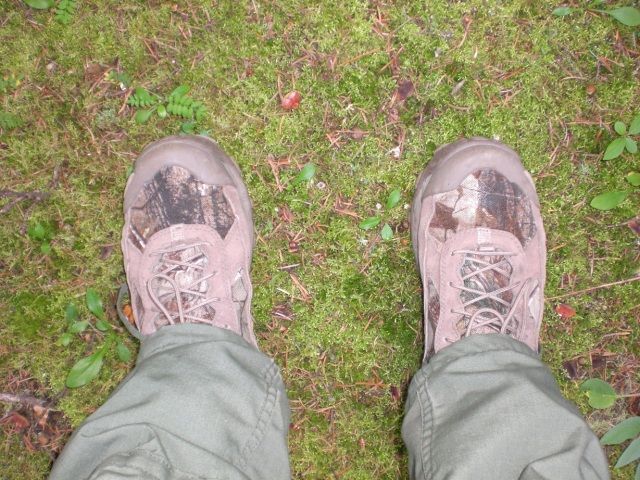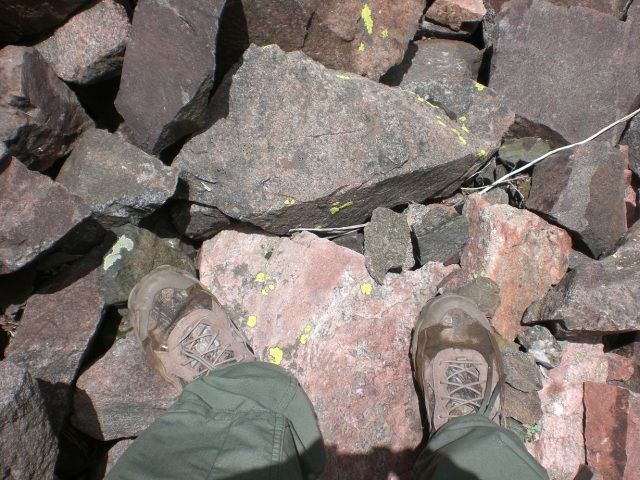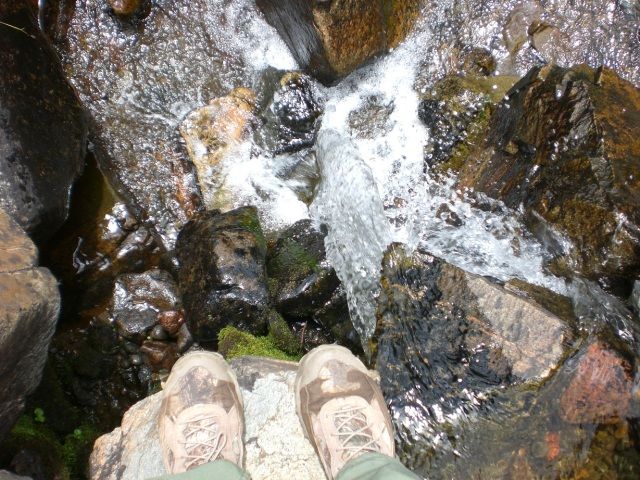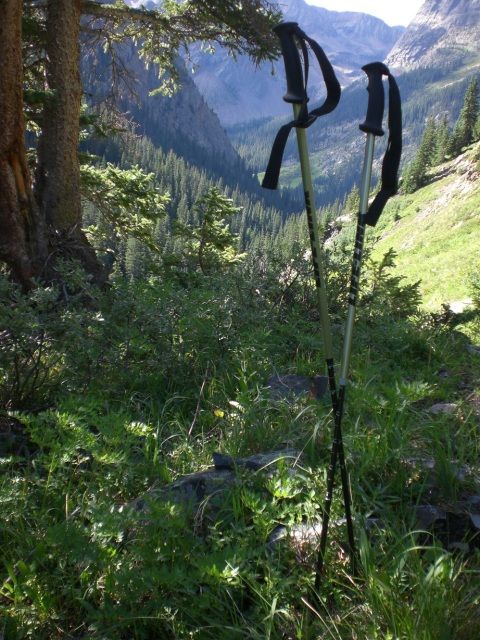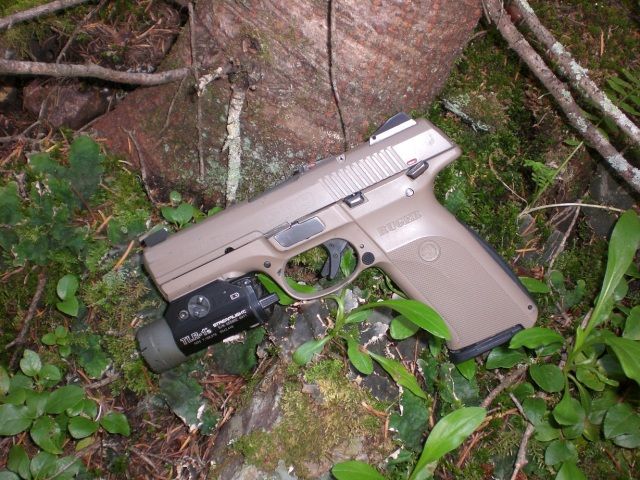Last summer my family was exploring a rather large underground cave which went 3/4 of a mile into the earth. Obviously it was pitch black down there, and we were quite happy to have our various Streamlight flashlights, as they completely lit up the cave which allowed us to see the amazing rock formations as well as to see any unsure footing that lay ahead. As we encountered other groups of people exploring the cave, who mostly had small halogen flashlights and headlamps, they all wanted to see what kind of super bright and compact lights we were using that allowed us to light up an entire cave. I'm sure at least a few of them left that cave and ordered some Streamlight products! At one point we found ourselves in a huge cavernous room, with ceilings almost 50 feet tall and an area over 600 feet long and nearly 60 feet wide. We had turned the lights out and sat in the darkness for a moment, allowing everyone to experience the full effects of being truly blind. As I switched on my Streamlight Super Tac to continue the hike, my son turns to me and says, "Wow! That's like a stream of light!" You got it, buddy.
In my years in the outdoors and training environments, I have spent a lot of time in the darkness. It's no fun when you can't see, can't identify things properly, or end up with dead batteries. So to combat those three issues, I have tried just about every light available. You name the brand, I've tried it. Expensive, cheap, super cheap, big, small, everything. Obviously some are better than others, and cost doesn't always equal the best quality. But there is one brand of lights that I have used and still continue to use that stands above the rest in my opinion, and those are Streamlights.
With the majority of their lights being LED, the days of dim light, busted bulbs, and dead batteries are long gone. My personal carry light, weapon lights, emergency lights, even my camping lights are nearly all Streamlights. Why? Because they are durable, reliable, and most of all, they are cost-effective (i.e. affordable). While they have many, many models to fit just about any need (just check
out their website) here is a breakdown of the models that I use and how they fit my lifestyle. All prices which are listed after the description are prices taken from
LA Police Gear, which is a great site with excellent selection and top-notch service.
My Personal Carry Lights
TOP: My SL-20L, which is a replacement for my old Maglite models. It's a big light, but not heavy, though it would serve well if needed to fight back against things that go bump in the night. LED output reaches 350 lumens with a 2 hour runtime, and the beam can go out to over 400 yards! But the best part about this light is that it's rechargeable, and won't build battery memory or die when you need it most because you just leave it on the charger whenever you're not using it and it trickle charges to ensure you always have a light that is 100%. Conveniently it also comes with 2 chargers and both AC and DC adapters. This is a fantastic light for emergencies or as a vehicle light. This big boy resides in my office.
($110.00)
BOTTOM LEFT: My wife's ProTac 1L, painted to make it easier to find if dropped outside. Uses 1 CR123 Lithium battery to shine 110 lumens for 2 hours in either High or Strobe mode, and 12 lumens for 14 hours in Low mode. Bezeled edge, impact resistant glass, and aluminum body make it handy to smash against something if the need arises.
($47.00)
BOTTOM CENTER: My bedside light, a ProTac 2L, the big brother of the 1L. Same design as the 1L, but 180 lumens in high mode and uses 2 CR123 lithium batteries. I find it easier to use than the 1L because of it's longer length - better for smashing stuff, you know?
($50.00)
BOTTOM RIGHT: My daily carry ProTac 1AA. I've been carrying this light for a while now, and it's hard to beat. Literally - I can't break this thing. It's been smashed, dropped, dunked, and all other manners of abused and it still works like the day it was taken out of the package. It's perfectly sized for my back pocket, and the clip is strong enough to keep it there at all times. It's only 50 lumens, but it uses a single AA battery which is easy and inexpensive to replace since it's a daily use light. And 50 lumens has been plenty of light for what I use it for, which is mostly up close. Runtime is 2 hours, and it also has the Strobe and Low functions.
($44.00)
My Wild Outdoors Lights
TOP LEFT: The Sidewinder is my survival kit light, and though this light now comes in a compact version, I prefer the larger version. With a 185 degree swivel head and ridiculously strong clip, which is sized to slip into MOLLE webbing, it's always easy to get light where I need it most. Durable and waterproof, it also boasts an unbreakable lens. It runs on just 2 AA batteries, and offers 4 different brightness modes as well as a strobe mode. But the best part? It outputs in 4 different colors, depending on the model you get. I have the Sportsman model, which gives me white, red, blue, and green. It's super easy to operate and can be adapted to mount on helmets and other equipment.
($65.00)
TOP RIGHT: My go everywhere headlamp, the Argo HP. I use this lamp mostly when I'm training at night, mountain biking at night, or hiking in the dark, since it is so extremely bright. It's not hard to see the trail with this lamp lit up at over 60 lumens, and with a 6.5 hour runtime it stays on for the whole time I'm using it. It runs on 2 CR123 lithium batteries, which is the downside, but buying the CR123s online saves you A LOT of money over buying them in the store. The Argo also has a High and Low output mode, which makes it nice for changing from up close to distance use.
($40.00 at OpticsPlanet)
BOTTOM: The Polytac is Streamlight's entry level light, but there's nothing basic about it. It has a high impact polymer body and 80 minute runtime at over 70 lumens. This light is my backup light, the one that gets tossed around camp, beat up, loaned to friends who brought lesser lights, etc. Uses 2 CR123 lithium batteries, and affixed to mine in the picture is a Surefire Combat Ring
($14.00 at OpticsPlanet, set of 3) which makes handling and using lights of this diameter much easier. A note on the Polytacs: they are not made to withstand the recoil of a shotgun, so they should not be mounted as a weapon light on a shotgun.
($30.00)
My Handgun Weapon Lights
LEFT: On my Ruger SR9 sits the TLR-1s, which is an amazing little light, especially considering the cost as compared to other weapon lights from other brands. Weapon mounted lights on handguns have their pros and cons, of course. If you plan to carry this way, you'll need to find a holster that fits a gun with a light, and often this is a custom job, as are my holsters from
TCB Firearms. Having a mounted light adds a little weight and affects the balance, but that's nothing that's ever bothered me. You have the advantage of having a one-tool solution when you need your handgun for emergencies, instead of having to grab two seperate tools (handgun and light). You also now have both tools in the same hand, which is a huge plus when dealing with doors, good guys, and bad guys. A downside is that you'll now be aiming your weapon everywhere you aim your light, which may include covering things with your muzzle that you don't want to destroy. You also are limited to what angles of light you can present to expose or otherwise identify your target. Ultimately, you must decide what works best for you. Keep in mind that Streamlight weapon lights are not just designed to mount on your handgun, but also can be affixed to any long gun with a rail. Streamlights also come with several different "keys" to changeout the rail fixture on the light to be able to adapt to the multitude of different rail mounting options on handguns and long guns. Why can't they just make everything one universal size? Sheesh. Anyway, this light has 2.5 hour runtime at 160 lumens, and provides the High, Strobe, and Low output modes that Streamlight is famous for. An easy paddle-type toggle switch which is easy to activate can also provide momentary or constant-on function. As with any other piece of equipment, training is your friend when using weapon lights.
($100.00)
RIGHT: It's not easy to find a good light to fit a compact handgun like my Kel-Tec PF9, but Streamlight has both the TLR-3 and the TLR-4, with the TLR-4 being mounted to my PF9 in the above photo. The TLR-4 is different than the TLR-3 in that it has a built-in laser to assist in low-light or poor visibility shot placement. At 100 lumens and 1.5 hour runtime, it gives you plenty of time to get the job done. This little light also uses the same momentray or constant-on paddle-switch that the TLR-1s does, only it does not have the High, Strobe, and Low functions, just High. Located under the main switch is a small toggle switch, to be set when attaching the light, which gives you the option of using just the light, just the laser, or both at the same time. This light is also well-suited for larger framed handguns or long guns, and comes with the same various rail keys to attach it to different setups. I just use the "E" key which allows me to attach it to everything I have.
($140.00)
My Long Gun Weapon Lights
TOP: Mounted on my primary AR-15 is the TLR-1HP, by means of a Streamlight long gun mount
($12.00 at LA Police Gear). Combining the size of the TLR-1s with the power of the Super Tac, Streamlight really knocked it out of the park with this one. This is a no-joke 400 yard+ light, though I have found engaging normal sized targets beyond 300 yards with a 2MOA red dot a bit of a challenge. Extremely bright at 200 lumens with a 2 hour runtime and an unbreakable lens, this is the light to have for your carbine if you plan to do any shooting, whether target or defensive, in an outdoor environment. Mounting a light on a defensive long gun, as opposed to a handgun, is not just an option, it's a requirement in my opinion. You must be able to identify your target and be able to place your shots well, which you can't do in the dark with no light, and using a handheld light in conjunction with a long gun, while not impossible, is not preferable.
($115.00)
MIDDLE: The Super Tac is, simply put, one of the brightest medium-sized handheld lights available. I call it the "moonbeam" due to its extremely bright white beam - this is the light my son described as a "stream of light" in the cave story mentioned above. Easy to carry and just as durable as the rest of the Streamlight line, it provides 160 lumens for 3.5 hours. In the picture, it is also mounted in the Streamlight long gun rail mount, which can easily attach and detach certain Streamlight models through use of a rotating pressure nut
($49.00 at OpticsPlanet). In addition to mounting this to my long guns, primarily my hunting AR-15, I also use this light for camping and hiking since it has such a great beam!
($72.00)
BOTTOM: Mounted on my primary shotgun, a Remington 870, is the TL-2X. This is a light that can take the abuse of shotgun recoil and shines at 200 lumens with a 2.5 hour runtime, and also has the High, Strobe, and Low functions of other Streamlight handhelds. It's mounted in an Elzetta Shotgun Mount
($40.00 at Elzetta) which has proven tough and reliable and also acts as a magazine clamp for my extended magazine. I had to remove the clip from the light to mount it in the Elzetta setup, but that was easy. It's also important to note that when mounting shotgun lights in this manner on a pump action shotgun you will need to mount them slightly beyond the reach of your support hand thumb so you do not turn them on and off accidently while operating the pump. You do not need to worry about losing the ability to momentarily press the tailcap switch while firing unless you love lots of pain in your thumb, a lesson learned the hard way by yours truly. A shotgun light mounted in this fashion is either on or off while shooting, or momentarily on while searching or navigating.
($68.00)
Getting a good light is just half the battle, but understanding how to use it is the other half. There is more to using a light in a defensive situation than just turning it on. What's that? You don't know all of the ins and out of using a handheld light or a weapon light with your firearms? How awesome it is, then, that
Independence Training has a Low-Light / No-Light training course for both handguns and carbines! Come and train with us and you'll not only get top-notch instruction on the use of lights, but you'll also get to try out several of the above model Streamlights, including all of the weapon lights.
While this review outlines the excellent Streamlights I use on an often daily basis, it is not meant to say that Streamlight is the only option. They are, of course, an excellent option and the preferred light of Independence Training thanks to their quality and cost, but more important to take from this review is the vast number of flashlights and lamps that you use in your life, and the often little consideration that they are given. How many lights to you have in your home, office, vehicle, or operational environment? Do they actually fit your needs, or were they purchased at a "bargain bin" somewhere? Are the batteries fresh, and how long will they last? Do you have extra batteries nearby? Is a light always at hand? All this and more are considerations you need to make to select one of the most important pieces of equipment you'll ever use, seeing as they alleviate the inherent weakness that all humans possess: lack of natural night vision. So short of walking around with night vision optics strapped to your head at all times, take a look at the lights in your life, consider their use and their value, and then seriously consider purchasing some Streamlights.
Stay Aware, Stay Safe, Train Hard.
-Glen Stilson












